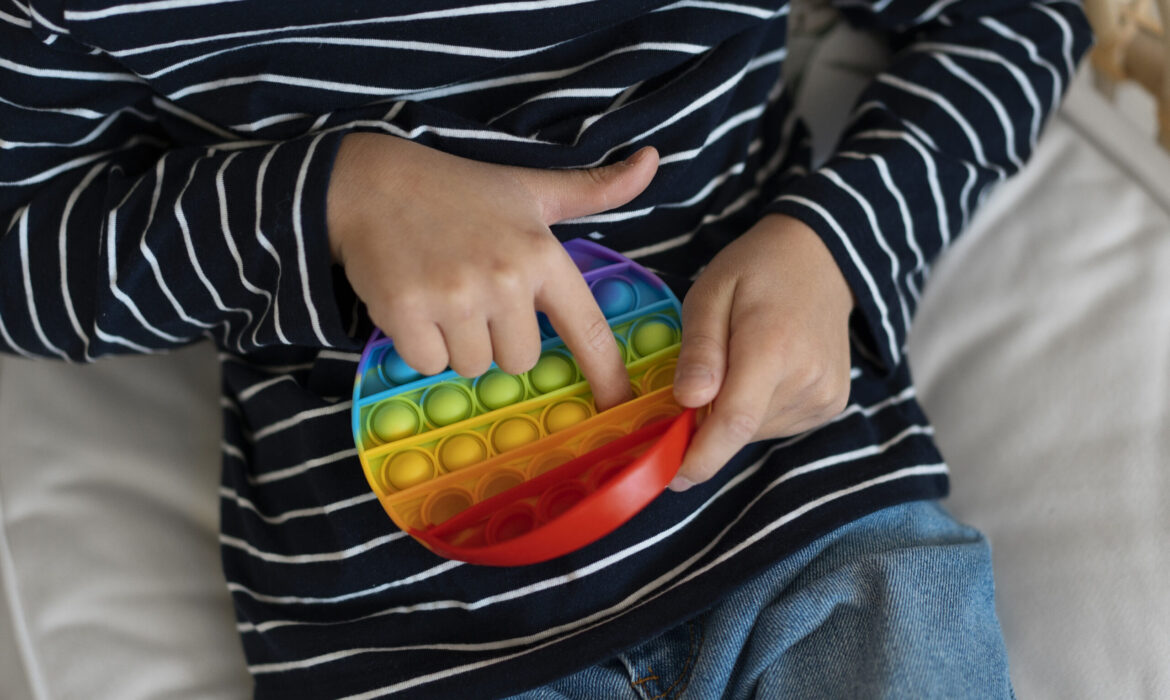What Is Stimming? Understanding Self-Stimulatory Behaviours In Children With Autism
If you’ve ever noticed a child flapping his/her hands, rocking back and forth, or repeating certain sounds or movements, you may have seen stimming in action. While these behaviours might seem unusual at first, they often serve an important purpose in helping children with autism feel more in control and comfortable. Technically, stimming in autism, which stands for self-stimulatory behaviour, is a natural and common way many children cope with emotions, process sensory input, or express excitement or stress.
Understanding stimming in autism can ease uncertainty and strengthen the bond between children and their caregivers. This blog post is here to help parents, educators, and caregivers recognise what stimming is, why it happens, and how to respond with compassion.
Why Do Children With Autism Stim?
To understand what stimming is in autism, it’s important to recognise the reason behind it. Stimming is not random or meaningless. For children with autism, whose brains often process sights, sounds, and sensations differently, stimming can be a way to create a sense of balance and control. Everyday environments can feel overwhelming or unpredictable, and stimming helps many children navigate those challenges.
Stimming behaviours in autism can serve a variety of functions. Some children stim to self-soothe during moments of anxiety or stress. Others use it to cope with sensory overload when lights are too bright, sounds are too loud, or textures feel uncomfortable. It can also be a way to express strong emotions like excitement or frustration. In many cases, stimming helps regulate emotions and provides comfort during unfamiliar or intense situations.
Rather than trying to stop these behaviours, it’s more helpful to understand what the child might be coping with. Stimming can be a meaningful and necessary part of how a child with autism experiences and interacts with the world around them.
Common Stimming Behaviours In Children With Autism:
Hand flapping
Rapidly moving or flapping hands are often seen when the child is excited, anxious, or overstimulated.
Rocking back and forth
Sitting or standing while moving the upper body rhythmically. This can be calming or a response to stress.
Spinning objects or self
Fixating on spinning toys or physically spinning in circles. It may help regulate visual input or provide sensory satisfaction.
Repetitive speech or sounds (echolalia)
Repeating the same words, phrases, or sounds. This can be a way to process language, self-soothe, or express emotion.
Tapping or banging objects
Repetitive tapping, banging, or hitting toys or other items to create predictable sounds or rhythms.
Flicking fingers or objects
Wiggling fingers near the eyes or flicking objects to enjoy visual effects or sensory feedback.
Pacing or walking in patterns
Repeatedly walking back and forth or in circles. This may help release energy or manage emotions.
Visual stimming
Staring at lights, moving fingers in front of the eyes, or watching moving objects move repetitively.
Touching or rubbing textures
Constantly seeking out certain textures to touch or rub, which may bring comfort or sensory satisfaction.
Self-injurious behaviour
In some cases, stimming can involve harmful actions like headbanging or biting. These forms should be addressed with care and professional support.
How To Approach Intervention:
Understand the trigger.
The first step is to observe the stimming closely and look for patterns. Ask yourself what might be prompting the behaviour. Is the child feeling overwhelmed by noise or bright lights? Are they anxious, frustrated, bored, or trying to communicate something they can’t express in words? Identifying the root cause helps guide a response that is supportive rather than reactive.
Offer safe alternatives.
If a stim is potentially harmful or socially challenging, try to redirect it rather than shut it down. Offer safer options that still meet the child’s sensory or emotional needs. For instance, if a child squeezes on others when anxious, you might introduce a stress ball instead. The key is to validate the need behind the behaviour while finding healthier or more practical ways to fulfil it if it is not possible to reduce it.
Create a sensory-friendly environment.
Sometimes, stimming increases simply because the environment is too intense. Making small adjustments, like dimming harsh lights, reducing background noise, offering noise-cancelling headphones, or providing calming textures, can reduce sensory overload and make the child feel more in control. A calm, predictable space helps reduce the need for intense stimming in the first place.
Collaborate with professionals when needed.
If the stimming is causing harm or seems rooted in deeper emotional or sensory challenges, it’s a good idea to seek guidance from qualified professionals. Professional therapists can assess the behaviour and suggest strategies that align with the child’s needs.
AUTISMSTEP offers personalised, evidence-based support for families navigating behaviours like stimming, with intervention plans that are respectful, practical, and tailored to each child’s unique development.
With empathy and the right support strategies, you can help your child manage stimming without taking away a behaviour that plays a meaningful role in how they cope and communicate.
Conclusion:
Stimming is a common behaviour for many children with autism. It helps them manage emotions, handle sensory input, or feel more secure in overwhelming situations. While some types of stimming may need gentle support, especially if they cause harm or disrupt daily life, most are simply part of how a child copes and communicates. It is important to understand it, respond with empathy, and create a space where the child feels safe and supported.
If you’re looking for guidance on how to support your child through behaviours like stimming, AUTISMSTEP is here to help. Our personalised, evidence-based programs are designed to meet each child’s unique needs and support families with care and confidence. Reach out to us today.
autism
self stimulatory behaviours
stimming





